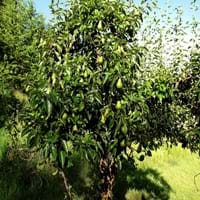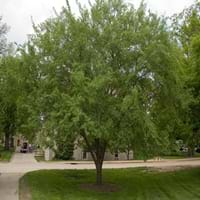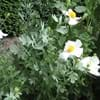Life Span
Perennial
Perennial
Origin
Europe, Western Asia
Eastern Asia
Types
Green Anjou, Red Anjou, Bartlett
Ulmus parvifolia 'Emer II', Ulmus parvifolia 'True Green'
Number of Varieties
Not Available
Habitat
Humid climates, moist forests
Woodland Garden Canopy
USDA Hardiness Zone
3-8
5-9
Sunset Zone
2a, 2b, 3a, 3b, 4, 5, 6, 7, 8, 9, 14, 15, 16, 17, 18
3a, 3b, 4, 5, 6, 7, 8, 9, 10, 11, 12, 13, 14, 15, 16, 17, 18, 19, 20, 21, 22, 23, 24
Habit
Oval or Rounded
Upright/Erect
Flower Color Modifier
Not Available
Bicolor
Fruit Color
White, Yellow, Red, Green, Yellow green
Tan, Brown
Leaf Color in Spring
Light Pink, Red, Green, Light Green
Green
Leaf Color in Summer
Dark Green
Dark Green
Leaf Color in Fall
Purple, Dark Green, Burgundy
Yellow, Red, Green
Leaf Color in Winter
Light Green
Not Available
Leaf Shape
Oval with a pointed tip and fine teeth along their edges
Elliptic, toothed
Plant Season
Early Spring, Winter
Spring, Summer, Fall, Winter
Sunlight
Full Sun
Full Sun, Partial Sun
Growth Rate
Medium
Not Available
Type of Soil
Loamy, Sandy
Loam, Sand
The pH of Soil
Acidic
Acidic, Neutral, Alkaline
Soil Drainage
Well drained
Well drained
Bloom Time
Fall, Summer
Fall
Tolerances
Drought
Drought
Where to Plant?
Ground
Ground
How to Plant?
Grafting, Seedlings
Seedlings
Plant Maintenance
Low
Medium
Watering Requirements
Medium, Water less during winter, Water more in summer, when new, water every week
Average Water Needs
In Summer
Lots of watering
Lots of watering
In Spring
Moderate
Moderate
In Winter
Average Water
Average Water
Soil pH
Not Available
Acidic, Neutral, Alkaline
Soil Type
Not Available
Loam, Sand
Soil Drainage Capacity
Not Available
Well drained
Sun Exposure
Full Sun, Partial Sun
Full Sun, Partial Sun
Pruning
Remove damaged leaves, Remove dead branches, Remove dead leaves
Remove damaged leaves, Remove dead branches, Remove dead leaves
Fertilizers
Ammonium Nitrate, Fertilize the soil before planting
6-12-12 or 5-10-10
Pests and Diseases
Red blotch
Canker, Leaf spot, Rots, Wilts
Plant Tolerance
Drought
Drought
Flowers
Yes
Insignificant
Flower Petal Number
Single
Single
Foliage Texture
Medium
Fine
Foliage Sheen
Glossy
Glossy
Attracts
Aphids, Birds, Butterflies, Pear psylla
Birds
Allergy
Anaphylaxis, Digestive Problems, Itchiness, Swelling
Moderate Allergen
Aesthetic Uses
Cottage Garden
Bonsai, Showy Purposes
Beauty Benefits
Good for skin, Improve skin tone, Making cosmetics, Moisturizing, Skin Problems
Not Available
Environmental Uses
Air purification, Shadow Tree
Air purification
Medicinal Uses
Cancer, Cardiovascular problems, cholesterol-lowering, Detox, Diabetes, Energy, Fiber, Heart problems, High blood pressure, Obesity, Treating diverticulosis, Weight loss
Antidote, Demulcent, Diuretic, Expectorant, Febrifuge, Hypnotic
Part of Plant Used
Bark, Fruits, Leaves
Fruits, Inner Bark, Leaves
Other Uses
Used As Food
Can be grown in a shelter belt, Used as a thickener in soups
Used As Indoor Plant
No
Yes
Used As Outdoor Plant
Yes
Yes
Garden Design
Not Available
Container, Feature Plant, Mixed Border, Shade Trees, Street Trees, Topiary / Bonsai / Espalier
Botanical Name
PYRUS communis
ULMUS parvifolia
Common Name
Pear
Chinese Elm, Lacebark Elm
In Hindi
नाशपाती
Lacebark Elm
In German
Birne
Lacebark Elm
In French
Poire
Lacebark Elm
In Spanish
Pera
Lacebark Elm
In Greek
Αχλάδι
Lacebark Elm
In Portuguese
Pera
Lacebark Elm
In Polish
Gruszka
Lacebark Elm
In Latin
Orbis
Lacebark Elm
Phylum
Vascular plant
Magnoliophyta
Class
Magnoliopsida
Magnoliopsida
Clade
Angiosperms, Eudicots, Rosids
Angiosperms, Eudicots, Rosids
Subfamily
Amygdaloideae
Not Available
Number of Species
Not Available
Season and Care of Pear and Lacebark Elm
Season and care of Pear and Lacebark Elm is important to know. While considering everything about Pear and Lacebark Elm Care, growing season is an essential factor. Pear season is Early Spring and Winter and Lacebark Elm season is Early Spring and Winter. The type of soil for Pear is Loamy, Sandy and for Lacebark Elm is Loam, Sand while the PH of soil for Pear is Acidic and for Lacebark Elm is Acidic, Neutral, Alkaline.
Pear and Lacebark Elm Physical Information
Pear and Lacebark Elm physical information is very important for comparison. Pear height is 1,219.20 cm and width 800.00 cm whereas Lacebark Elm height is 460.00 cm and width 300.00 cm. The color specification of Pear and Lacebark Elm are as follows:
Pear flower color: White
Pear leaf color: Light Pink and Red, Green, Light Green
Lacebark Elm flower color: Red
- Lacebark Elm leaf color: Green
Care of Pear and Lacebark Elm
Care of Pear and Lacebark Elm include pruning, fertilizers, watering etc. Pear pruning is done Remove damaged leaves, Remove dead branches and Remove dead leaves and Lacebark Elm pruning is done Remove damaged leaves, Remove dead branches and Remove dead leaves. In summer Pear needs Lots of watering and in winter, it needs Average Water. Whereas, in summer Lacebark Elm needs Lots of watering and in winter, it needs Average Water.





